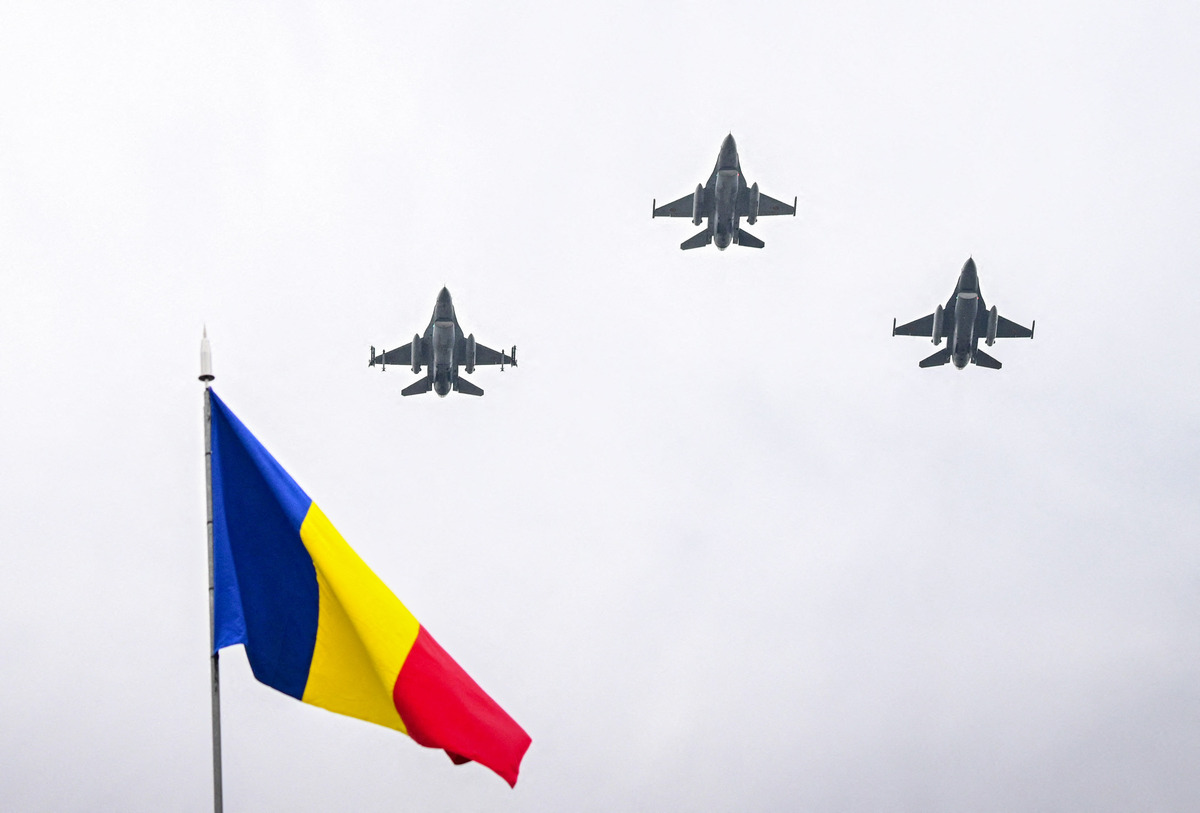NATO member Romania scrambled fighter jets overnight after Russia attacked Ukrainian infrastructure close to the alliance’s border, according to Bucharest.
Romania detected “groups of drones” heading over the Black Sea for Ukraine close to Romanian airspace just after 11:30 p.m. local time on Sunday, the country’s defense ministry said. Authorities triggered an air alert in Romania’s Tulcea county, the ministry said, as Moscow “carried out a new series of drone attacks on civilian and infrastructure targets in Ukraine.”
The town and broader region of Tulcea sit directly across the border from the Ukrainian port of Izmayil, which Russia has repeatedly attacked. The Danube River marks the border between the two countries, just north of Tulcea.
Two Romanian Air Force F-16 fighter jets took off from Borcea Air Base to the southwest of Tulcea “to monitor the situation,” the ministry said. The air base sits east of the capital.

DANIEL MIHAILESCU/AFP via Getty Images
The air alert was ended at 12:45 a.m., and the jets returned to their base, the government added.
Newsweek has reached out to the Russian Defense Ministry for comment via email.
Russian drones have crossed into NATO territory a number of times since the start of full-scale war in Ukraine in February 2022, with fragments found in Romania on several occasions.
The drones straying into NATO territory have not been deemed intentional attacks, but the incidents stoke the fire of tensions between the alliance and Moscow, at its worst point in decades.
This type of incursion was “unthinkable” three years ago but is “now treated as routine,” Lithuanian Foreign Minister Gabrielius Landsbergis said in September.
Oleh Kiper, the head of Ukraine’s Odesa region, which includes Izmayil, warned residents of the port city to take shelter overnight. Ukraine’s air force said it had detected Russian strike drones over Odesa, heading west from the area north of Izmayil.
Kiper said in late September that a “large-scale” Russian drone attack on Izmayil had killed three people.
Romania will investigate on Monday morning to see whether any of the drones landed on NATO territory, the government said.
On October 23, Romania said it had detected at least one unidentified “aerial target” along the border between Romania and Ukraine. Just days earlier, Bucharest’s radars had picked up a “small air target” over the Black Sea, crossing into Romania’s airspace around an hour and a half after it was first detected. Another object had violated Romanian airspace two days previously.
Bucharest’s defense ministry published a draft law in late October, meaning it could intercept or shoot down drones illegally entering its airspace.
(Except for the headline, this story has not been edited by PostX News and is published from a syndicated feed.)

